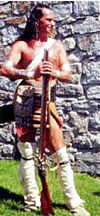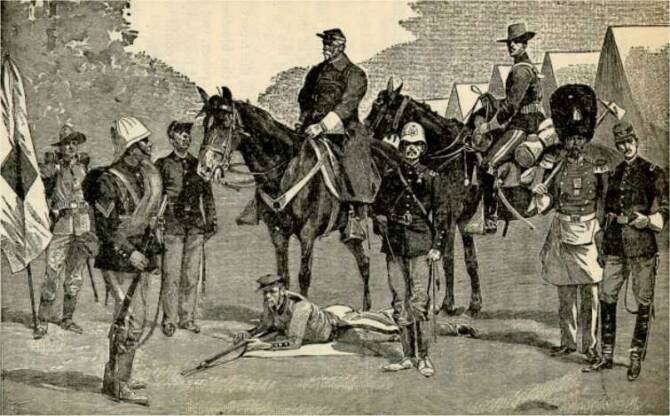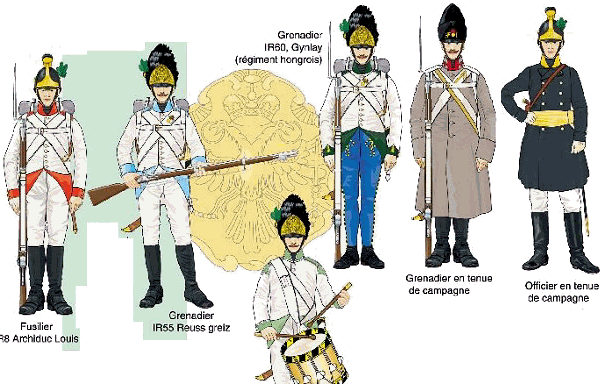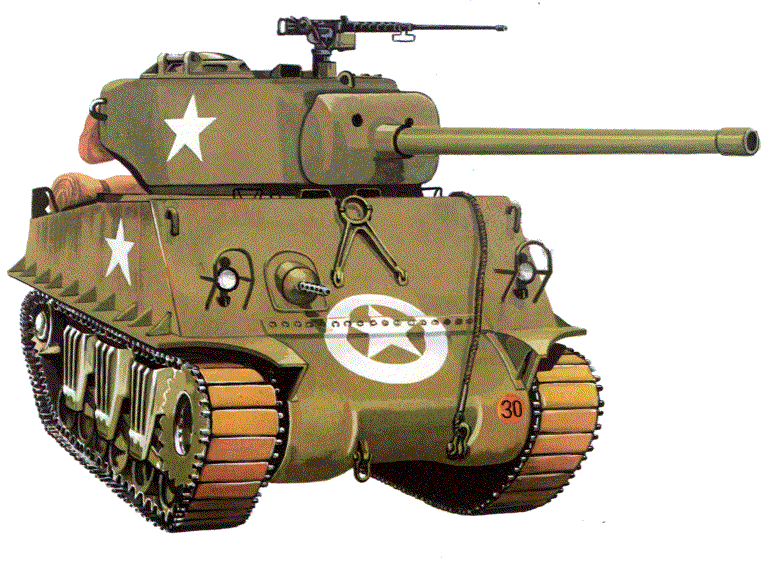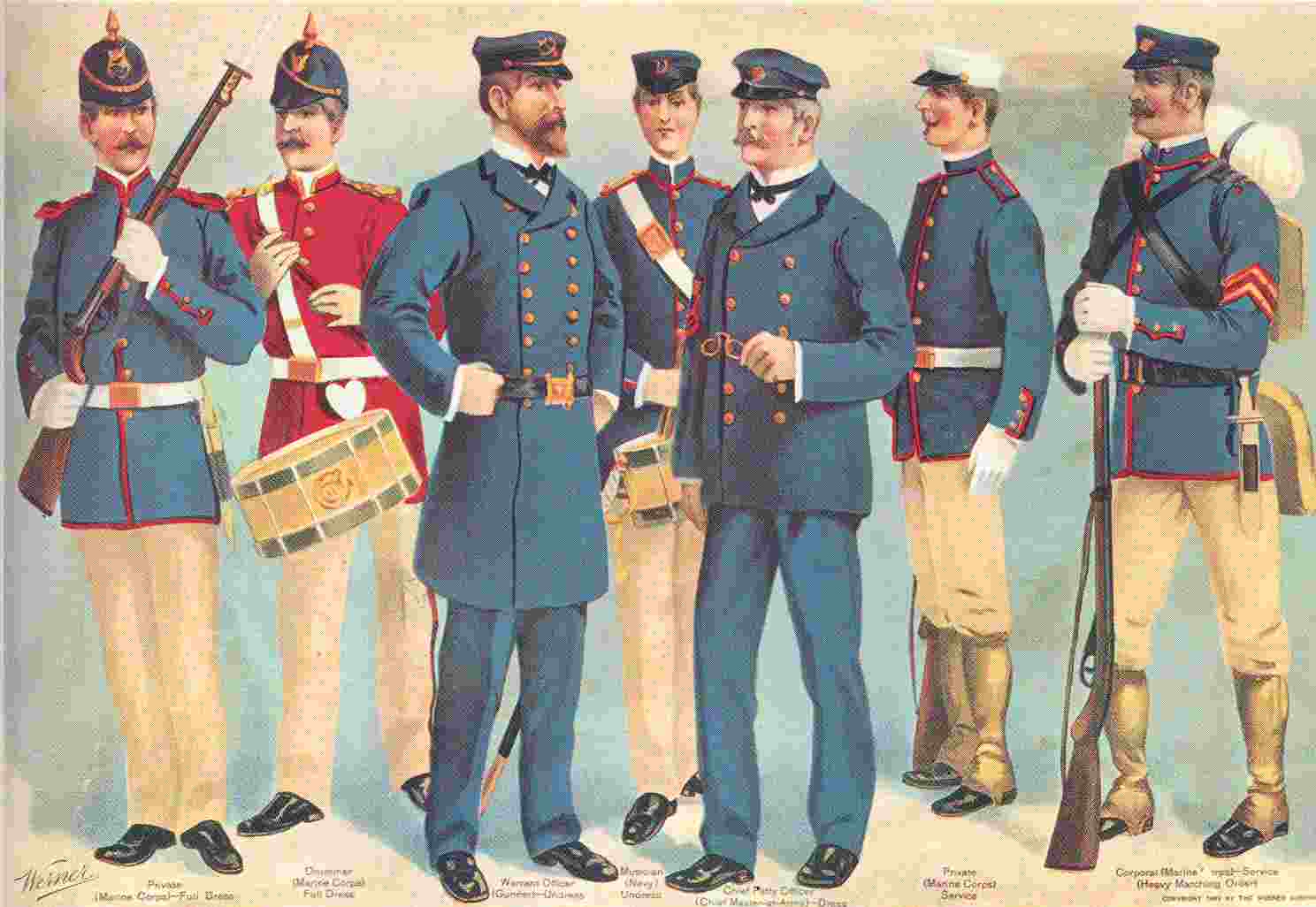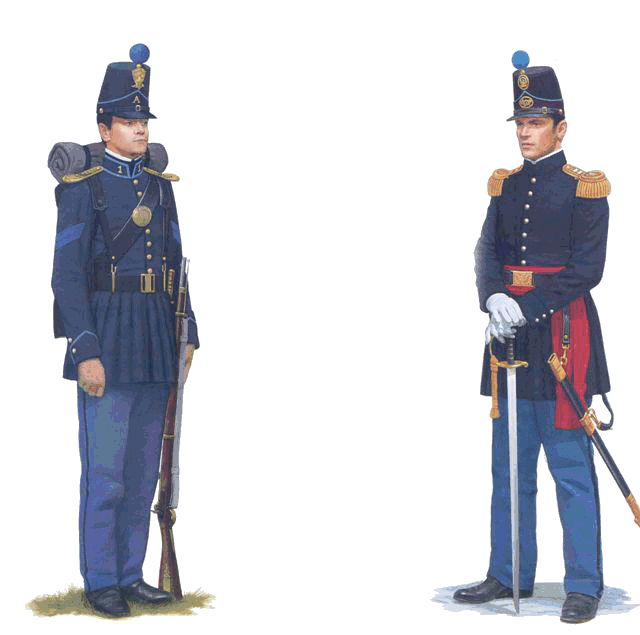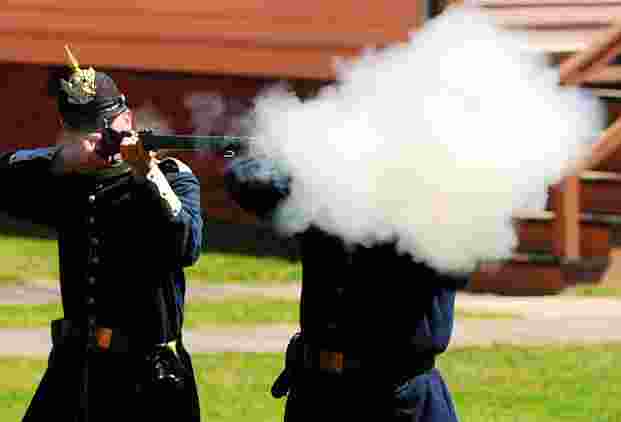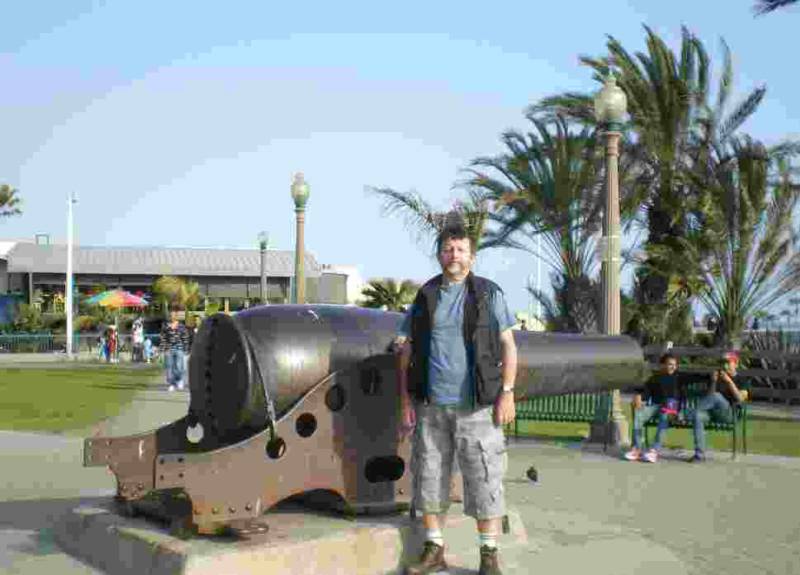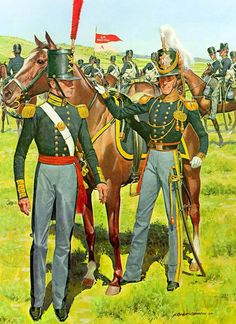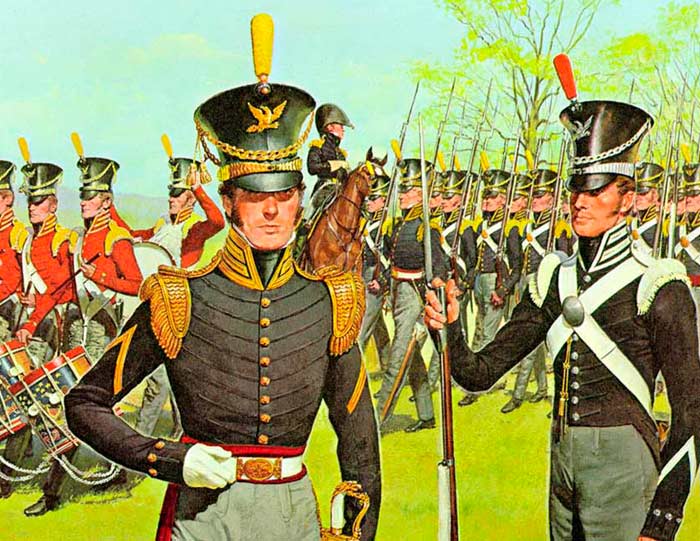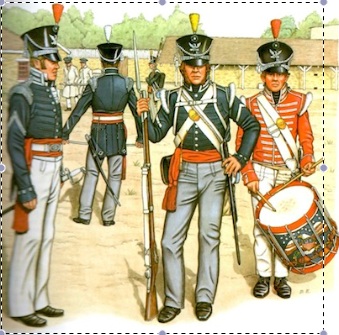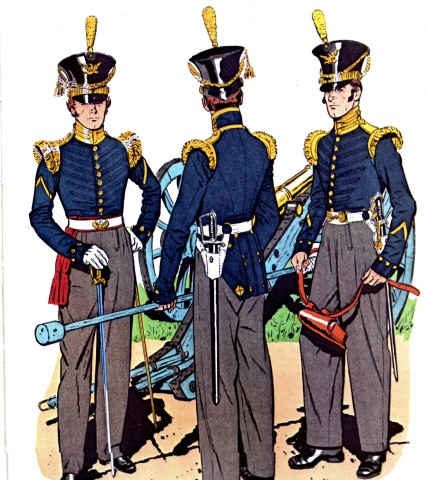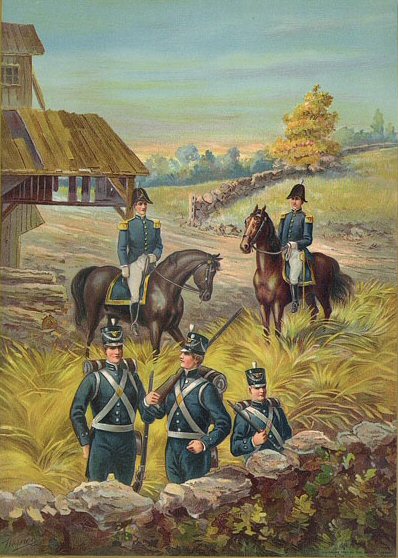Total Entries: 25
map of red indian battles Monday, 3/20/06, 10:15 AM
transparent, large and slow loading. use arrow keys which appear to blow the map or up or down scale. up to 100 battle sites shown here.
From: usa wide
Web Site: map of red indian battles
Battle of Gonzales 1835 Wednesday, 7/20/05, 8:58 AM
Texan war of independence
From: Texas
Web Site: Yotor.com
Battle of Cut Knife 1885 Wednesday, 7/20/05, 7:51 AM
Cree Indian victory of the NW Rebellion
From: Saskatchewan
Web Site: Wikipedia
Battles of the Plains Indian Wars 1875-6 Thursday, 3/3/05, 5:23 AM
Clashes included the Battle of Fallen Timbers, Battle of Horseshoe Bend, Battle of Rosebud Creek, Battle of Tippecanoe, and the famous Battle of the Little Bighorn. ¿Did the Sioux have a strategy in 1876, or was their behaviour purely reactive? Their larger numbers than usual were seemingly due to increased seasonal movement from the agencies - itself a reaction to government threats to restrict their hunting grounds, and army preparations for a major campaign. Their unique decision to concentrate all the tribal groups for mutual protection was a reaction to the threatened campaign, and also to Reynold's attack on a Cheyenne village in March. Their advance to meet Crook at the Rosebud in June was triggered by reports from hunting parties, not from any organised scouting. Their fight with Custer was brought about by his advance on them. If they had scouting reports of his column, these seem to have only been at the last minute¿
From: Montana, Wyoming, etc
Battle of Rosebud Creek 1876 Thursday, 3/3/05, 4:59 AM
¿On 17th June 1876, 1500 Cheyenne and Lakota Sioux, under Crazy Horse, delayed for 6 hours the 1000 troops commanded by General George Crook and supported by 300 Crow and Shoshone, thereby cutting off reinforcements that might have aided Custer at the Battle of the Little Bighorn. This was the first time that Native Americans had united together to fight in such large numbers¿ Crook¿s report on the battle: ¿When on Rosebud Creek, Montana, the scouts reported Indians in the vicinity and within a few moments we were attacked in force, the fight lasting several hours. We were near the mouth of a deep canyon, through which the creek ran. The sides were very steep, covered with pine and apparently impregnable. The village was supposed to be at the other end, about eight miles off. They displayed a strong force at all points, occupying so many and such covered places that it is impossible to correctly estimate their numbers. During the engagement I tried to throw a strong force through the canyon, but I was obliged to use it elsewhere before it had gotten to the supposed location of the village. The command finally drove the Indians back in great confusion, following them several miles, the scouts killing a good many during the retreat. It is impossible to correctly estimate the loss of the Indians, many being killed in the rocks and others being gotten off before we got possession of that part of the field. We remained on the field that night, and having nothing but what each man carried himself we were obliged to retire to the train to properly care for our wounded, who were transported here on mule- litters. I expect to find those Indians in rough places all the time and so have ordered five companies of infantry, and shall not probably make any extended movement until they arrive¿
From: Fort Davis, Montana
Web Site: Fort Davis
Expédition Particulière Friday, 2/6/04, 8:26 AM
Expédition Particulière was the codename given to the French expeditionary army sent to help the American Revolution during 1780 to 1782. Its contribution was essential to the American-French allied victory at Yorktown in September 1781.
Web Site: Expédition Particulière
the History and Development of the American West Thursday, 5/1/03, 9:42 AM
from the Frontier and Pioneer days of the Wild West, to today's Modern West. Featuring: Westward Expansion, Western Trails, America's Freedom Documents, Cowboys, Indians, Native Americans, Pioneers, Trappers, Scouts, Gunslingers (the whole dang blang shootin' match is heah, bucko!), Outlaws, Gunbattles, Ghost Towns, Gold & Silver Mining, Saloons, Dodge City, Tombstone, O.K. Corral, Virginia City, Doc Holliday, Kit Carson, Wyatt Earp, Wild Bill Hickok, Davy Crocket, Daniel Boone, Billy the Kid, Jesse James, Buffalo Bill, Sitting Bull, Roy Rogers, Western Theme Parks, Museums and Exhibitions, the Prairie, Buffalo, Horses, Rodeos, Stage Coaches, Frontier Railroads, River Steam Boats, and anything of interest or of significance west of the Mississippi River. We carry a lot of links to other major high quality western-type web sites.
From: midwest good ol USA
Web Site: The American West
American society of military history ¿ military museum Thursday, 5/1/03, 7:52 AM
The Museum is at 1918 North Rosemead Boulevard South El Monte California Phone 626 442-1776 Fax 626 443-1776 about 15 minutes by car from downtown Los Angeles. The Museum is located about a 1/4 mile north of the Rosemead exit on the 60 freeway in the city of South El Monte in the Whittier Narrows Recreation Area. The Museum is open Friday, Saturday and Sunday year round from 10:00 Am to 4:30 Pm. Since all the Vehicle Displays are outside please call ahead if there has been recent rain to verify that the museum will be open.
From: East LA
Web Site: American society of military history ¿ military museum
The Modoc War, 1872¿73 Thursday, 3/27/03, 8:42 AM
a series of battles were fought between the Modoc and the U.S. army fought as a result of the attempt to force a group of the Modoc to return to the Klamath Reservation in S Oregon. Beginning in Nov., 1872, U.S. soldiers were engaged in sieges against the Modoc who were encamped in their ancestral lands around the lava beds near Tule Lake, northern California, using the volcanic features as defences. The soldiers, after losing battle after battle, increased their forces to 1,000 by Mar., 1873. During peace negotiations Gen E. R. S. Canby and Eleazer Thomas were killed; the soldiers intensified their efforts to subdue the Modoc and finally in late May, 1873, Captain Jack and his much reduced force of 30 warriors were captured. Captain Jack and three other leaders were hanged in October. The Modoc War proved costly to both sides: 87 soldiers were killed and 83 were wounded. Although the Modoc lost only 8 warriors and an unlisted number of women and children in the fighting, they were thereafter divided as a people.
From: Tule Lake, northern California
Web Site: The Modoc War, 1872¿73
The Canadian rebellions of 1837 Friday, 11/15/02, 12:40 PM
Web Site: The Canadian rebellions of 1837
Wars in North America Friday, 11/15/02, 12:29 PM
Covers: King Philip's War 1675 King William's War 1689 Queen Anne's War 1702 Father Rasle's War 1724-1726 French-Indian Wars 1754-1763 American Revolution 1777-1783 War of 1812 Seminole Wars 1817-18 Black Hawk War 1831-1832 Seminole Wars 1835-42 U.S.-Mexican War 1846-48 Seminole Wars 1855-58 Civil War 1861-1865 Fenian Raids 1857 Spanish American War 1898 Boxer Rebellion 1900-1901 WW 1 1917-1918
Web Site: Olive tree genealogy
Fenian invasions of Canada Friday, 11/15/02, 3:58 AM
another very nice looking site
From: Canada
Web Site: Fenian invasions of Canada
The Northwest Rebellion 1885 Friday, 11/15/02, 3:55 AM
In the mid 1800's, French-speaking Meti fur traders were pushing west. They hunted buffalo and traded with the Cree natives during the summer months but would return to more hospitable lands to wait out the winter Some of the Meti arrived at the Red River Settlement in Manitoba. There the government surveyors had come and redrawn the boundaries. They told Meti squatters that the farms they had been working did not belong to them. In 1870 Louis Riel led the Red River uprising. He and his men seized Fort Garry and proclaimed their independence. The Canadian government mobilized the army to put down the uprising. Before the government troops arrived Riel and the other leaders fled across the border into the United States. Many of their followers moved to northern Saskatchewan. . Eventually, some of the Meti began to take up year round residence at a bend in the South Saskatchewan River that they called Batoche. Here they made farms and started a town. In the summer of 1884 land surveyors from the Canadian government again appeared in the area. They were preparing the way for the settlers that would be coming on the new Canadian Pacific Railway. The Meti spoke French but the surveyors were English. The Meti had established their farms in the traditional French style that drew property lines based upon the river. The surveyors used a system that took the whole territory into account and was based upon the railroad line. When the surveyors appeared on Meti farms and started drawing lines down the middle of them, the stage was set for trouble. They wrote letters to Ottawa and they sent a delegation to Montana to fetch the exiled Meti leader Louis Riel. Now he returned to Canada to help the Meti at Batoche.
From: northern Saskatchewan
Web Site: The Northwest Rebellion 1885
1859: Incident at Harpers Ferry Wednesday, 11/13/02, 9:25 AM
John Brown, a militant abolitionist from Kansas, regarded slavery as a violent institution that deserved a violent retaliation. He was gripped by the idea of freeing the slaves using guerilla tactics. Operating from the rugged Blue Ridge Mountains, Brown needed sufficient weapons for his plans to succeed. To procure the needed arms, Brown led his "army of liberation", a small band of 18 armed men, into the small town of Harpers Ferry, Virginia (now West Virginia) on the night of Sunday 16 October 1859. They seized the Federal Arsenal located there and several other strategic points, along with 40 hostages, one of whom was Colonel Lewis Washington, the first president's great- grandnephew. Within the hour the new commandant of the Marines, Colonel John Harris, had ordered First Lieutenant Israel Green and a force of 86 Marines into action. The Marine unit proceeded by rail from Washington to Harpers Ferry and arrived at midnight of the same day. Lieutenant Green reported to Colonel Robert E Lee of the Army who was at the scene and who assumed overall command of the operation. Some fighting had already taken place between Brown's men and a state militia unit, led by Lee's aide, Army cavalry lieutenant J E B Stuart (whos name would be better known a few years later.) The result had been a stalemate. By the following dawn Colonel Lee had his plans made and a 24-man assault party briefed and ready to go. The volunteer troops had declined Lee's offer to conduct the attack on the heavily-fortified fire enginehouse (now known as "John Brown's Fort") vigorously. Colonel Lee ordered Green and Stuart to begin the operation. Stuart walked to the arsenal door and read aloud an ultimatum of surrender, and when Brown would not comply, Stuart waved his cap as a signal to Lieutenant Green and his Marines. In Green's words, "the men took hold bravely and made a tremendous assault upon the door" with heavy sledges and a ladder as a makeshift battering ram, "rushing in like tigers." Green was first through the shattered doorway; a gun inside thundered, the round narrowly missed his head and struck the Marine behind him, Private Luke Quinn, mortally wounding him. Green saw Brown crouched and reloading a carbine; the lieutenant sprang forward and struck Brown down with a saber slash across the side of his neck. Within seconds the fight was won and John Brown's short-lived insurection was over. Thirty-six hours after the raid had begun, ten of Brown's followers were killed in the siege, four were taken prisoner and four escaped. After recovering from his injuries, Brown was taken to Charles Town to stand trial for his crimes. Only one verdict was possible, and after being found guilty of treason, conspiring with slaves to rebel, and murder, the fanatic was publicly hanged on December 2, 1859, maintaining his composure to the end.
From: West Virginia
Web Site: 1859: Incident at Harpers Ferry
The battle of Ridgeway 1866 Thursday, 10/31/02, 11:17 AM
Although nowhere near Ireland, this was the largest Irish stand-at-arms between the Rising of 1798 and the Irish War of Independence in 1919. It was closely connected to the contemporaneous Fenian activity in Ireland itself and had its roots also in the large number of Irish soldiers discharged from the Union army at the conclusion of the American Civil War the previous year. The overall Plan of Attack of Maj. Gen. Thomas Sweeney, commander of the Fenian troops, involved upwards to 30,000 men, the largest part of which were poised in upstate New York for a dash at Montreal and Quebec City. A division of Nine hundred Irish soldiers of the Fenian Brotherhood, commanded by Col. John O'Neill, made a diversionary raid in the Fort Erie area to draw Crown forces away from Montreal. In the end the diversion amounted to the whole fight. Though outnumbered, the Irish were to a man veterans of the Civil War. The 1300 British regular troops and militia opposing them, though formidable on the drill field, had never been in combat, and were defeated at the Battle of Ridgeway, June 2, 1866. US President Johnson, after giving his tacit approval to the planned invasion, retracted this after Britain paid claims remaining from the Civil War and threatened war if the US did not stop the Fenians. The campaign thereafter came to an end. See also the following sites: Fenian Raid into Canada, 1866 ... the boys in blue, And we'll go and capture Canada ... your point of view, it was part of a raid ... Whatever its nomenclature, the June 2, 1866, encounter at Ridgeway ... www.acsu.buffalo.edu/~dbertuca/g/FenianRaid.html - 79k - Cached - Similar pages The Last Invasion of Canada: The Fenian Raids, 1866- 1870. by WS ... ... especially Captain JA Macdonald Troublous Times in Canada ... While the Fenians did actually launch another raid on Canadian territory a few days after Ridgeway ... www.utpjournals.com/product/chr/734/invasion14.html - 8k - Cached - Similar pages The Rifleman Online - The Battle of Ridgeway ... The Queen's Own Rifles of Canada. The Fenian Raid 1866. In the ... On June 1 st , 1866, the Fenians invaded Canada. ... column to travel by train to the town of Ridgeway ... www.qor.com/history/ridgeway.html - 24k - Cached - Similar pages The Turner Brigade: Features: Battle of Ridgeway Reenactment ... them into Canada. A short drive to Old Fort Erie, Ontario, brought us to the camps of what was billed "The 135th anniversary 'Battle of Ridgeway' Fenian Raid". ... home.earthlink.net/~turnerbrigade/ridgeway.htm - 18k - Cached - Similar pages Fenian raid of John O'Neill near Niagara ... Some additional references: The Last Invasion of Canada, Hereward ... Fenian raid of John O'Neill near Niagara Scale: 50 ... Ridge Road 7th NY (Buffalo) 10/8/6 Ridgeway ... pease1.sr.unh.edu/FnF/scenarios/Fenian/ - 8k - Cached - Similar pages General O'Neill ... nearly successful raid on Canada, Great Britain was forced to form a federal government for the colony. The third consequence was that the Battle of Ridgeway, ... www.esu8.org/~stmarys/hcinews/ hci2002/020718/general.html - 8k - Cached - Similar pages Events: 1815-1867 ... at Frelighsburg, Quebec; June 8, 1866 Fort Malden - Raid ... Cartoon - 1849 NAC/ANC C-92205; Punch in Canada ... Ellice Reward For Duncombe - 1837 NAC/ANC Ridgeway ... www.nelson.com/nelson/school/discovery/ images/evenimag/18151867/even1815.htm - 11k - Cached - Similar pages Welcome to The Irish Brigade Association's Web Site ... CANADA -- The IBA helped co-ordinate the June 1991 125th Anniversary Re-enactment of the Battle of Ridgeway, Canada , also know as The Fenian Raid on Canada. ... Description: Comprehensive information and history including details on how to become a member. Category: Regional > Europe > Ireland > Society and Culture > History www
From: Fort Erie, Great Lakes
Web Site: The "Ridgeway raid" into Canada, 1866
The Canadian Northwest Campaign Wednesday, 10/30/02, 7:49 AM
In the summer of 1884, many of the Métis of Batoche and the Saskatchewan district despaired of the government of Sir John A. Macdonald ever responding to their concerns regarding official tenure to their lands and their desire to safeguard their way of life in the face of settlement from eastern Canada. At the same time, the plight of many western Indians had become desperate because of the disappearance of the buffalo and a harsh government policy requiring them to settle and farm on their reservations. In June, the noted buffalo hunter, Gabriel Dumont, led a delegation of Métis to Montana in the United States to search out Louis Riel and to persuade him to lead them as he had done in 1869-70 in Red River. Riel reluctantly returned to Canada and again proclaimed a provisional government. The situation worsened until March 1885 when a skirmish at Duck Lake between the Métis and a force of North-West Mounted Police with civilian auxiliaries from Prince Albert cost 17 dead on both sides. The government feared a general Indian rising (although only the Cree bands of Poundmaker and Big Bear responded to Riel's entreaties and joined the resistance), and dispatched a force which eventually numbered over 5000 militia, including all 400 permanent troops, to the North-West via the still-incomplete Canadian Pacific Railway.
From: Canadian Northwest
Web Site: The Canadian Northwest Campaign
"Col. Crawford's Indian Campaign" 1857 Wednesday, 10/30/02, 3:30 AM
At the time Col. Crawford was making preparations for his intended coup do main, a large party of Indian warriors, composed of Wyandotte, Delawares and Shawnees, were reconoitering along the Ohio river, sometimes on one side and sometimes on the other, and unawares of the preparations that were being made for an invasion of their country by the enemy, 'til the latter crossed the river and made the Old Mingoe Towns their place of rendezvous.
From: along the Ohio river
Web Site: William Walker
The Philadelphia Campaign of 1777 Monday, 10/28/02, 3:06 AM
the birth pangs of the US Army under Washington, defending the rebel capital against the British and Hessians under Howe.
From: New England
Web Site: The Philadelphia Campaign of 1777
The capture of New York 1664 Monday, 5/27/02, 9:58 AM
In September, 1664, three or four English frigates, and a force of several hundred land-troops under Col. Richard Nicolls suddenly appeared in the harbor. They were speedily joined by the levies of the already insurgent New Englanders of Long Island. Nicolls had an overpowering force, and was known to be a man of decision. He forthwith demanded the immediate surrender of the city and province. Stuyvesant wished to fight even against such odds; but the citizens refused to stand by him, and New Amsterdam passed into the hands of the English without a gun being fired in its defense
Web Site: Peter Stuyvesant
Oneida Indians in the AWI Wednesday, 5/15/02, 11:35 AM
Most Oneidas took up the American cause during the Revolutionary, serving it with fidelity and effectiveness. Among many places Oneida warriors engaged the British was one far distant from the Oneida homeland, a quiet crossroads in eastern Pennsylvania called Barren Hill. Historians who have examined the skirmish at Barren Hill affirm that Oneida warriors were cowards. Upon encountering a British unit, Oneidas flung aside their weapons and fled in terror. A more detailed consideration suggests the opposite conclusion. Not only did the Oneidas fight well, their action was crucial to averting an American disaster. They retreated, as did the entire American column, but they were the last to withdraw and they almost certainly did so as requested by American officers.
From: the eastern seaboard
Web Site: Oneida Indians in the AWI
the Library of Congress Monday, 4/22/02, 1:17 PM
...jazzed up on the web!!!!
Web Site: American history at the Library of Congress
Civilisation Friday, 4/5/02, 9:53 AM
very comprehensive, from the earliest Indian wars onwards. almost one hundred links here.
From: Canada
Web Site: Canadian military history
The English Civil War in Barbados 1642-9 Friday, 1/11/02, 8:10 AM
the impact of the war on this sugar colony in the West Indies.
Web Site: The English Civil War in Barbados 1642-9
Military history of Nova Scotia 1613 - 1760 Thursday, 12/13/01, 10:08 AM
the 'Acadians' of NS were caught up in the middle of four conflicts between the French and British colonies of North America.
Web Site: Military history of Nova Scotia 1613 - 1760
North American military history links Wednesday, 11/21/01, 8:20 AM
incl the colonial war in the Phillipines
Web Site: North American military history links
(Members can delete entries.)

